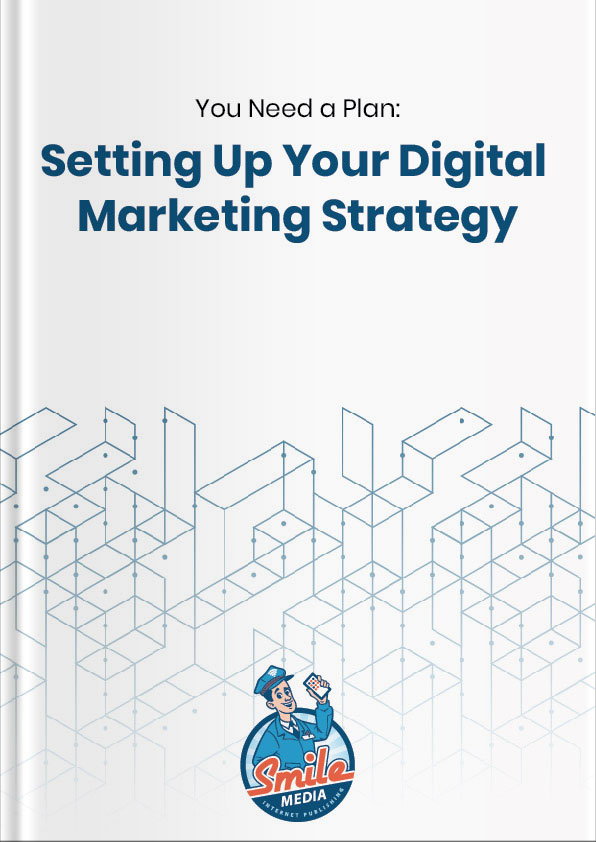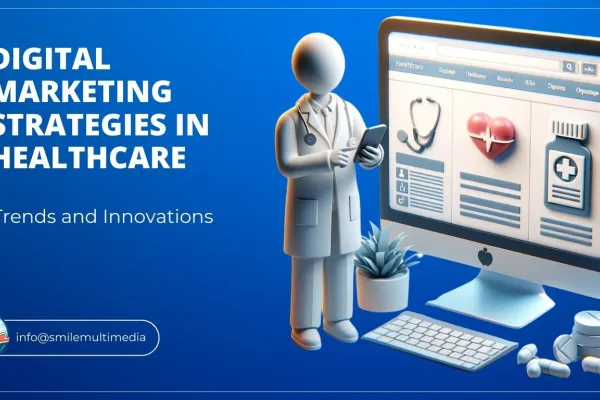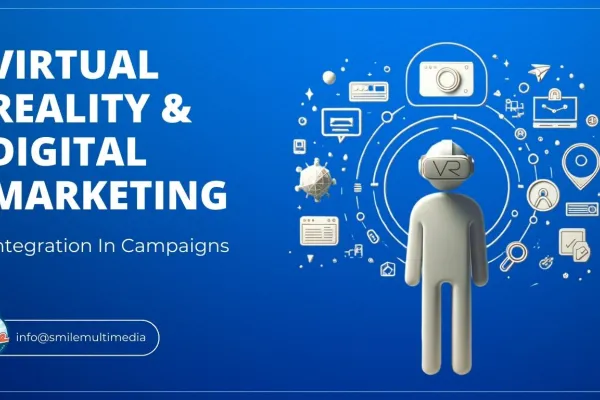For tech firms, now is a time of great opportunities. Never have technological inventions and innovations been more robust than they are today, with a brilliant new tech wonder taking birth each day. Now is the time for tech firms to participate on a global scale and come up with innovations of their own.
However, with opportunities comes competition, of course. Tech giants are engaged in a fierce competition amongst them, and smaller tech firms are not far behind. Everyone wants to be better than the competition, but with the many pressing challenges that face IT firms today, to get ahead of the competition effective IT marketing is key.
IT Marketing vs. Digital Marketing
Sometimes the terms IT marketing and digital marketing are confused with one another. To clarify, IT marketing refers to the process of promoting and marketing IT companies. It doesn’t necessarily only refer to digital marketing. It can (and should) also include more traditional forms of marketing.
With a growing number of IT companies located around the world, every firm needs to have a solid marketing strategy in place to get noticed. To do this, the adopted strategies must directly address the main challenges IT firms face today.
Challenges Facing Tech Firms
Five of the biggest challenges that tech firms deal with are:
Developing New Business:
IT firms today must constantly be developing new avenues for business solutions to be successful. For example, Apple is known best for manufacturing laptops and phones, but also makes TV sets and other home solutions. Microsoft started with computers and operating systems and then ventured into making smartphones and tablets.
Developing new business is one of the most important aspects of an IT firm; they will not last without consistent innovation. However, developing new products is also one of the biggest challenges faced by IT firms due to tough competition and the cost involved with innovating new and advanced technology.
Finding and Keeping Customers:
It's hard to find loyal customers these days. Someone who purchases Philips products may also buy Apple and Samsung products, and vice versa. It's not just about the brand anymore when it comes to tech; it’s ultimately all about the quality and price of the products.
People are going to lean towards products that blend innovation, utility, and practicality, regardless of the brand. The competition is tough, and every firm must work hard to come up with products that can continually attract and keep customers.
Developing New Ideas:
Innovation is what drives IT firms ahead. The need for innovation ranks higher in technology than any other industry. New ideas allow the firm to forge ahead into the future, instead of being pushed into oblivion by other competitors with similar offerings.
For instance, Kindle was the first to bring out an e-book reader. Although other companies later came out with similar offerings, the Kindle is still synonymous with eBook readers. In fact, many people say they are buying a Kindle when they are, in fact, buying an eBook reader.
It's like using the word Google for referring to an online search. Google will forever be known as an innovator in the world of online search, even though there are other search companies out there. Original ideas are what keep companies ahead of the competition, especially in the IT industry.
Keep Up With The Competition:
A difficult economy combined with a competitive market makes the situation tougher for tech companies today. The implementation of effective marketing strategies in this situation can help businesses get past others and get noticed. The key, of course, is to do things differently – and better – than the rest.
Meeting Customer Expectations:
Customers often have certain expectations from the brands and products they love, and rightly so. They’re spending money on something, so they should have their expectations met, or exceeded.
But with every new version of a product, customers have greater expectations from the next version. Tech companies can’t afford to let customers down, because if they do, existing customers will turn to other brands. Customer expectations are consistently one of the biggest challenges faced by tech firms.
Six IT Marketing Basics You Should Know
Both tech giants and smaller IT firms are faced with the challenges above. In fact, things tend to get tougher as the business grows bigger because there are greater expectations, higher demands, and there is more competition as you climb up the ladder. The best way to survive is with an effective marketing strategy.
Marketing can be tough, but there's no reason to be afraid of it. Marketing is an essential part of any business. After all, without marketing, a business will never get noticed. Instead of getting overwhelmed and trying to take care of everything at once, your marketing strategy can be broken down into three parts:
What are you selling? (Unique selling point)
Who are you selling to? (Target market)
How are you selling it? (Marketing methods)
With these three-pointers in place, let's look at the six basics of IT marketing that everyone must know:
Start with Marketplace Research
To know your competition and how to come out ahead of the others, you need to know your market thoroughly. By researching your marketplace, you will be able to better understand the wants, needs, and expectations of your customers. Understanding your customer will put you in a better position to make the right products and services to resolve their pain points and directly address their biggest challenges.
Conducting market research also provides insight into how your existing operations have performed so far. With effective research, you can develop a better understanding of the operations that are performing better, vs. where you could stand to improve. The more thorough your research, the more data you will collect. And the more data you have, the more effective your decisions will be.
According to a recent article about IT Marketing, it is said that those who research current and potential clients grow 3-10 times faster than those who don’t. It literally pays to do your research!
Build a Strong Website Infrastructure
Your website is a key indicator of your capabilities and overall credibility. If you have an unimpressive website design, buyers are highly likely to look somewhere else, even if you are fully capable of fulfilling their needs. In the past, tech firms didn't necessarily have to engage in heavy marketing and advertising. Since the technology was itself the selling point, there wasn't much promotion required.
But times have changed, and in the tech industry, websites must be exceptionally impressive. That said, your website should do more than make you look impressive. It should also act as your virtual storefront, where people can find you instantly and easily. Shoppers should be able to find helpful and relevant content easily on your site. They should find clear explanations of products and services, as well as ways to get in touch with your company.
Also, your website should be integrated with social media so that customers can engage with you on a more personal level. Word of mouth advertising is no longer sufficient; you’ll need ways for customers to leave reviews, testimonials, and other positive feedback to get ahead. Investing in a quality website will more than pay for itself over time.
Position Yourself as an Authority Figure
It isn't enough to simply create products or services. To be able to carve a niche in the industry, you need to establish your company as an authority figure. You need to become a well-known expert in your field – someone other companies and media look up to for leadership and insight.
You can do this by consistently creating educational content that informs and educates people about your technological expertise. The process will take a while, but once you achieve an authority figure status, your audience will view your company as an expert in your field, boosting your credibility and trust.
Invest in Search Engine Optimization (SEO)
Search engine optimization is constantly evolving, much like technology itself. Therefore, tech firms must always be aware of what works and what doesn't. Simply put, SEO involves increasing your website’s visibility with the use of targeted keyword phrases related to your company and services, both on and off-site.
To be successful with your SEO efforts, you also need to incorporate local SEO techniques, such as maintaining a consistent brand identity across multiple platforms. Investing in a combination of on-site SEO and local SEO, along with guest posting and achieving brand mentions across the web will greatly improve the authority of your website, increasing its rank in the search engines.
Don’t Forget Social Media Marketing
No business can survive without social media marketing these days. In fact, statistics indicate that social media contributes to 80 percent of the growth of B2B firms. Social media is not only for networking and conversing but also for sharing content and engaging with your audience. It enables businesses to directly interact with their audience, learn more about their expectations, and gives them a platform for addressing customer pain points.
There is no other platform except social media that allows a company to get so close to its audience, and that allows you to demonstrate your leadership and expertise on a personal level. It’s arguably one of the most important parts of a digital marketing strategy. Remember that social media is also competitive, so if your activity isn’t consistent, your audience will forget about you. Therefore, it’s important to provide consistent, useful, and engaging content in your social media efforts.
Fuel Your Efforts with Content Marketing
Content marketing is the driving force of your entire IT marketing strategy. IT marketing is about attracting a relevant audience and working to turn engagements into leads, and then into sales. Without useful, educational content, it’s not possible.
Content marketing involves the creation and sharing of several types of content from your website, blog, and social media channels, to media outlets, content syndication, and guest blogging for other publications. The intention is to educate your target audience and address their challenges, building credibility and visibility in the process.
Need Help?
Whether you’re a small firm or a large organization, Smile MEDIA offers you the most competitive Boston digital marketing services. Whether you need the whole IT marketing package or seek help with only of the many services we provide, the expert team at Smile is here to help your business get ahead of the competition.










